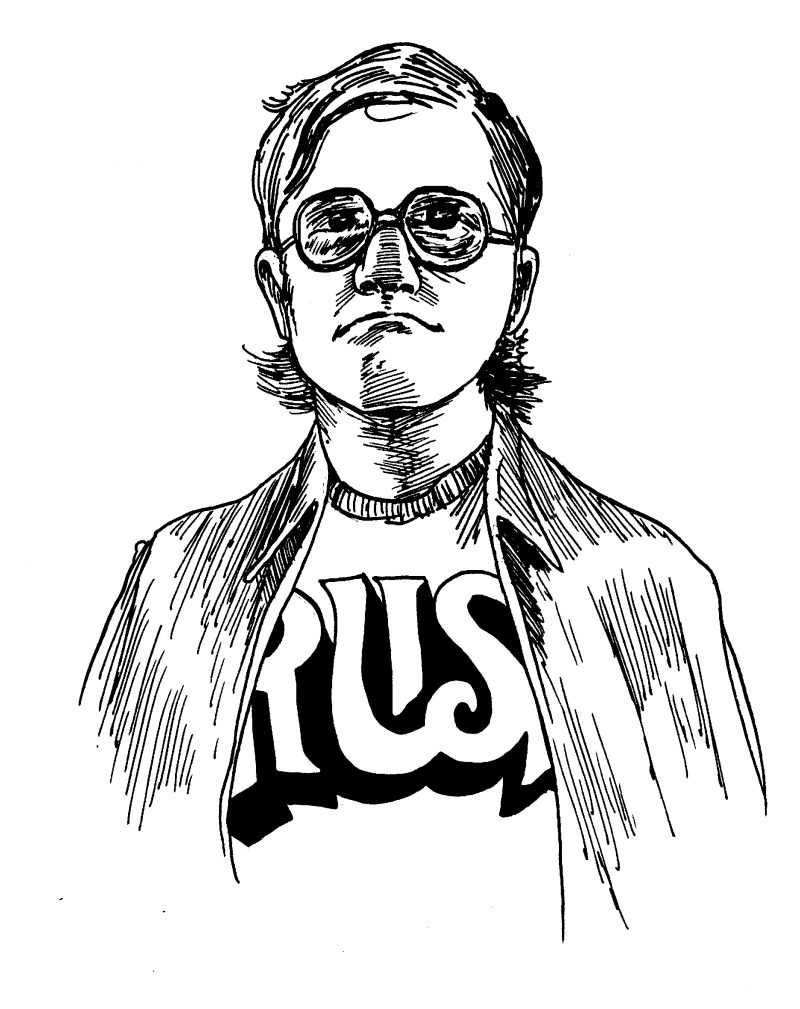In 1968, bassist/vocalist Geddy Lee, guitarist Alex Lifeson, and drummer John Rutsey began performing in the church basements and high-school auditoriums of suburban Toronto. Heavily influenced by Cream, Led Zeppelin, and Deep Purple, they released a self-titled debut in March 1974, marked as much by Lee’s four-string dexterity as by his vocals—which Rolling Stone would later refer to as a “dog-calling falsetto.” Two weeks before the group’s first U.S. tour, Rutsey fell ill. A soft-spoken farm-equipment salesman by the name of Neil Peart auditioned for the spot, his drums transported in trash cans. He turned out to be the most maniacal percussionist this side of Keith Moon, and a poet to boot, thus helping to create a musical unit that would go on to polarize rock aficionados like no other.
Largely snubbed by the mainstream rock press, Rush is a complete aural anomaly. Jurassic rock radio keeps them in light rotation alongside the corpses of AC/DC, the Who, and the Stones. They received only a sputter of ’80s MTV attention, even with a collection of epic, high-concept videos.1 And yet the Red Hot Chili Peppers, Smashing Pumpkins, and Primus all claim them as a major influence. Members of Tool, Korn, Sepultura, and Iron Maiden have also paid them tribute.
To their fans, Rush is the Spock-tastic, demonically proficient father of progressive metal, harbinger of a singular musical philosophy. To their detractors, Rush is soulless, quasi-existential, as sexy as pocket protectors, and about as scandalous as a trio of Amish farmers. One isn’t seduced by their rhythms over time. One immediately groks Rush, or one doesn’t. I’ve made no apologies for being a Rush fan, but I have never tried to make converts.
KISS has their Army, the Dead have their Heads, and although I once called them “a sea of IT,” I have come to realize that nothing unifies Rush fans as much as being Rush fans. Reviewing the band’s ’96 Test for Echo stop at the LA Forum, I noted that “tattered tour shirts abounded, from Yes to Rage Against the Machine, the Residents to Miles Davis.” A casual poll among Rush fans would more likely find Fripp and Eno, John Wetton–era King Crimson, Gentle Giant and Hawkwind on the hi-fi than modern practitioners of the “progressive” genre (a misnomer to describe what is, in fact, rigidly conservative). Bands who, on paper, boast the most striking influences—Coheed and Cambria, Dream Theater—are less likely to be embraced by Rush fans than, say, the Dead Kennedys and the Kronos Quartet.
Yet it is enthusiasm, and not passion, which Rush fans exude. Rock, by all accounts, is...
You have reached your article limit
Sign up for a digital subscription and continue reading all new issues, plus our entire archives, for just $1.50/month.
Already a subscriber? Sign in





